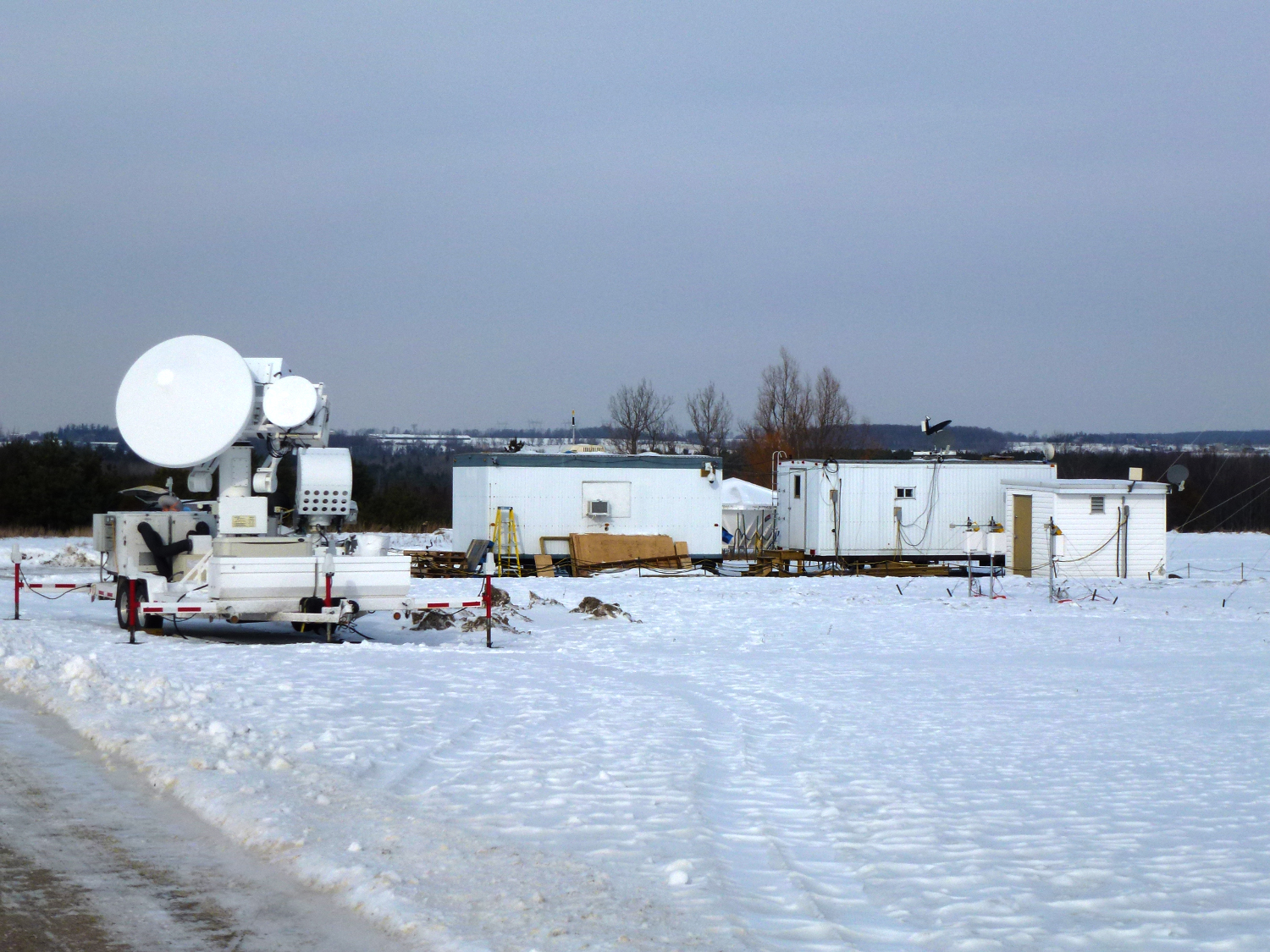GCPEx Operations Trailer and D3R



This radar scans the air column for snow falling from the
clouds to the ground. It uses two frequencies that together can determine
the shape and size of snowflakes, and the distribution of those sizes
throughout the clouds and snowing area.

The D3R will operate as part of GPM Ground Validation, supporting GPM pre-launch algorithm development and will contribute to post-launch precipitation product validation. In the pre-launch era, the D3R provides independent estimation of hydrometeor classification and drop size distribution retrievals. The radar thus offers an insight into the microphysical processes that dominate the retrieval (and associated measurement error) of precipitation types and rates from satellite data.